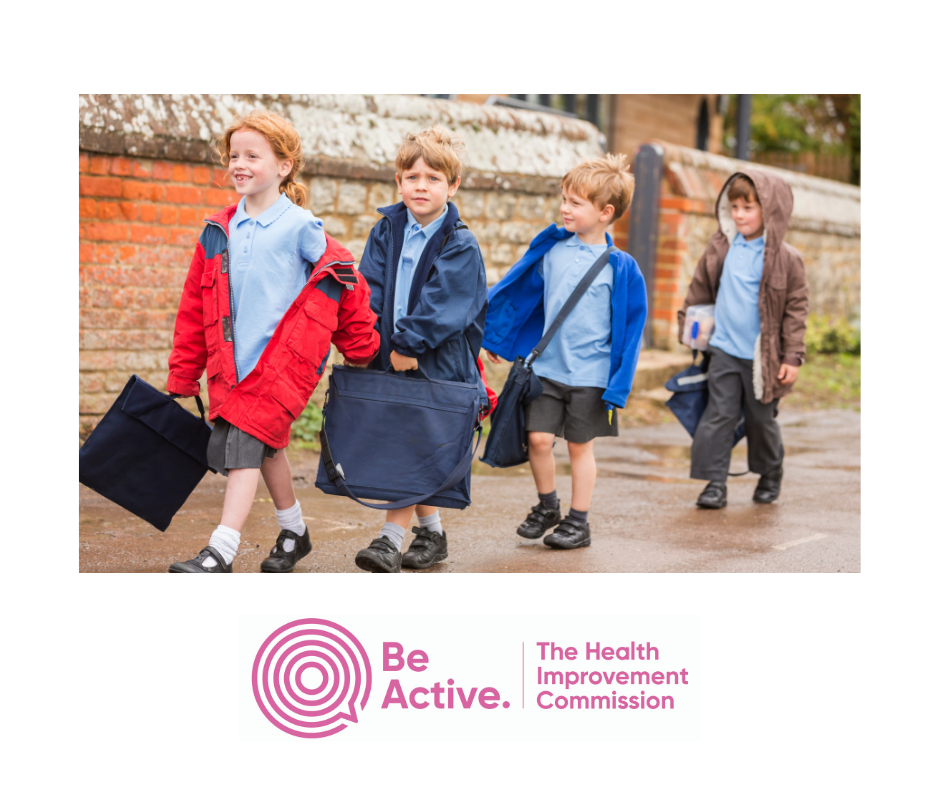Let’s work together to make travelling to school healthy, environmentally friendly, safe and fun
The Health Improvement Commission is reminding the Bailiwick community of the importance of active travel during road safety week and encouraging the whole community to work together to create the conditions where families can travel actively to and from school.
Despite a significant increase in the numbers of children who travelled actively to school immediately after both lockdowns, early indicators of the most recent active travel audit, which is still being undertaken, are that the numbers of children walking and cycling to school, for all or part of the journey, are levelling off and returning to the pre-lockdown level.
Alun Williams, the Be Active lead at the Health Improvement Commission, comments:
The benefits of active travel are well known.
Active travel is good for individual health, cheap, reduces congestion and plays a significant role in reducing global emissions from road transport.
We know that there is a real appetite for travelling actively, reflected in the uplift post-lockdowns. Also, from a young person’s perspective, the Guernsey Young People’s survey 2019 showed that many young people would like to travel actively more often.
For the past 30 years children in Guernsey and elsewhere have been travelling less actively to school, creating a vicious circle: more families drive, there are more cars on the road and that makes walking and cycling to school less attractive.
We want to transform this situation into a virtuous circle by supporting families to switch to active travel to school and reclaiming roads around schools for children.
A community response
The most effective approach to increasing active travel is to get the whole community to play its part and contribute to a joined-up approach. Alex Costen, Active Travel Officer at the Health Improvement Commission, explains how we can all play our part:
Families
We know that parents see the benefits of walking to school, including improvements in mood and behaviour in their children and a chance to connect as a family. We encourage them to incorporate active travel into their daily lifestyle. That doesn’t mean ditching the car for good but choosing to walk or cycle even a couple of times a week will make a big difference. We are big fans of blended travel where families travel actively for part of the journey. One way to do this, and for adults to get some activity too is to “park and stride” – parking further from school, and walking in from there.
Schools
In our conversations with headteachers and teachers it is clear that healthy, active and safe travel is taken very seriously. Many schools face challenges because of unhelpful locations. The infrastructure at and around some schools was not designed to accommodate the volume of vehicles that use them, and in many places does not make active travel attractive or easy. But there are local solutions, we only need to look at initiatives at St Martin’s and La Houguette to see how schools listening to pupils’ voices can make a difference. These schools have developed realistic alternatives for parents and pupils. For some schools we hope that the next phase will include introducing walking buses, or introducing school street schemes like those established in the United Kingdom and elsewhere. A school street scheme is a road outside a school with a temporary restriction on motorised traffic at school drop-off and pick-up times. The restriction applies to school traffic and through traffic.
Government - Reducing speed limits around schools
Policies that improve road safety are a fundamental piece of the puzzle. The Health Improvement Commission is particularly keen to see the reduction of speed limits in the areas near and surrounding schools. Alun Williams explains:
We would be supportive of reduced speed limits around island schools. Most of the UK's larger cities have adopted 20mph for their residential streets and Wales is about to implement a 20mph national default for residential roads. The General Assembly of the United Nations endorses 20mph or 30km/h speed limits where people mix with motor vehicles.
Research elsewhere has found clear evidence that decreased traffic speeds reduce collisions and casualties. Collisions happen less often and when they do happen there is less risk of fatal injury. 20mph speed limits introduced across the UK have provided additional benefits, including health benefits, through increased willingness to walk and cycle.
Most school sites in Guernsey have a 25mph speed limit. Only one school site (St Sampson’s and Le Murier site) has a 20mph zone and eight schools are near 35mph zones. We would like areas around schools to be safe cycling and walking networks, accessible by people of all ages and abilities. When these conditions are created, more schools will feel empowered to establish schemes that encourage active travel and more families will have the confidence to travel actively.
In conclusion, the benefits of active travel are increasingly recognised. It is healthy, environmentally friendly and fun. Perceptions of safety are a key factor in deciding whether to let children travel actively to school. All road users need to play their part and share the responsibility.
